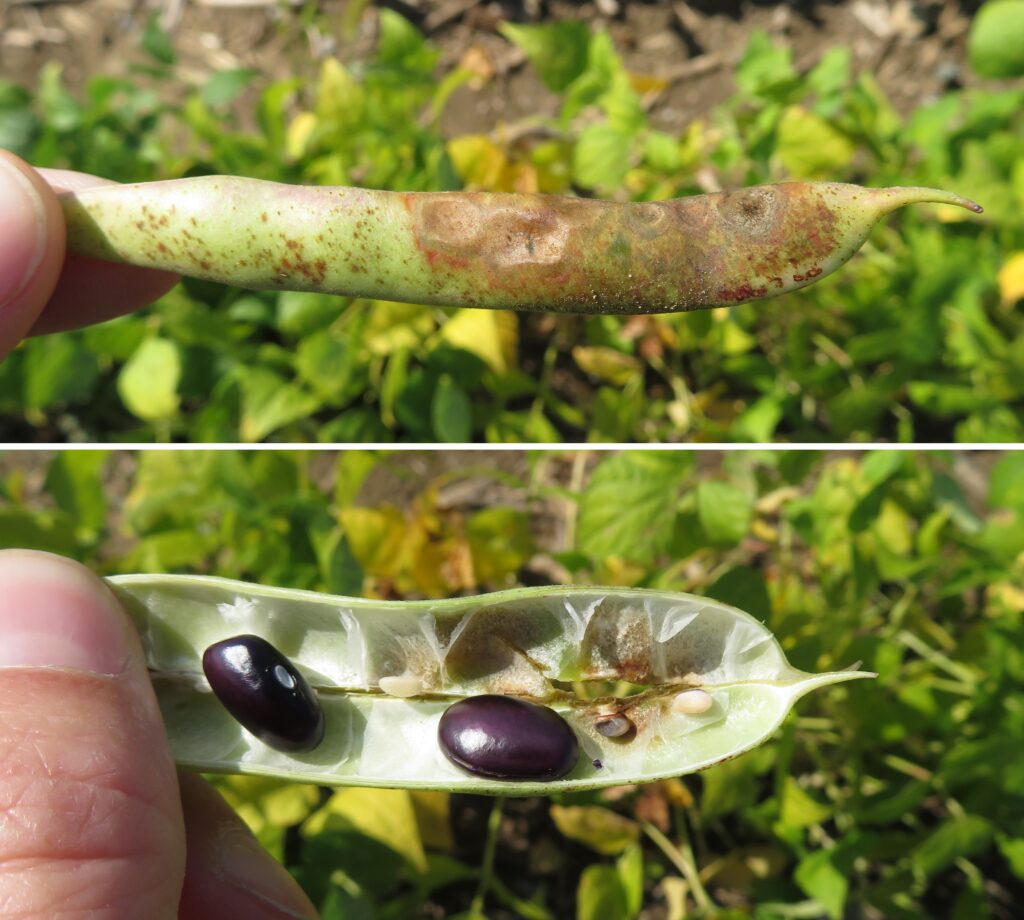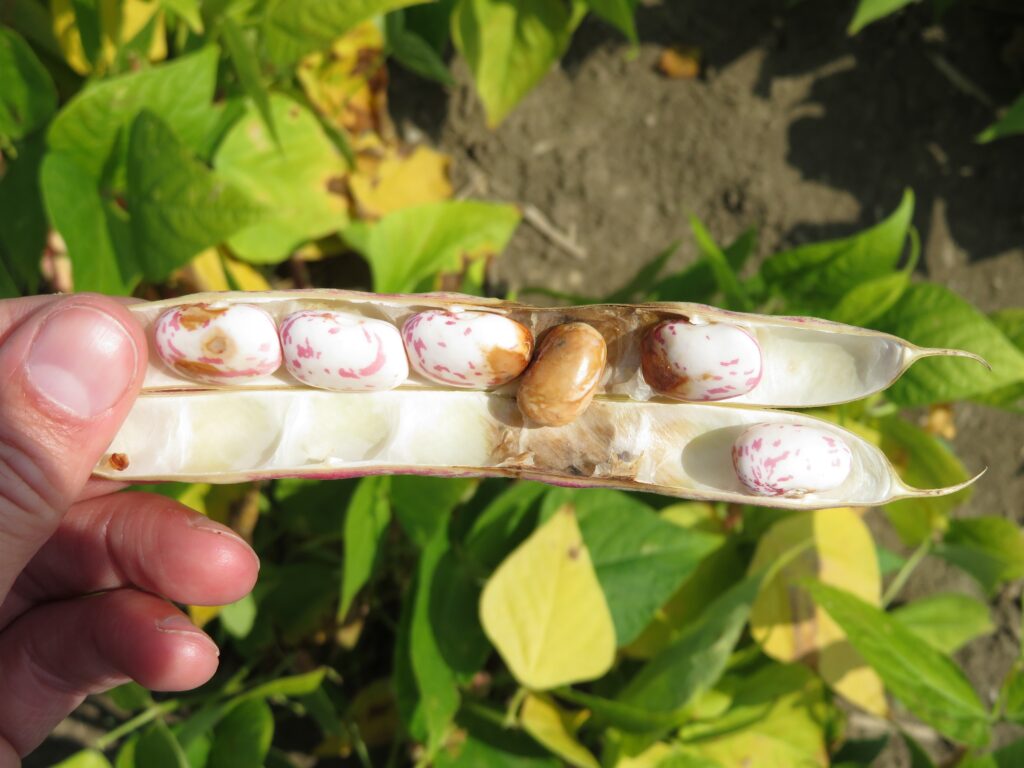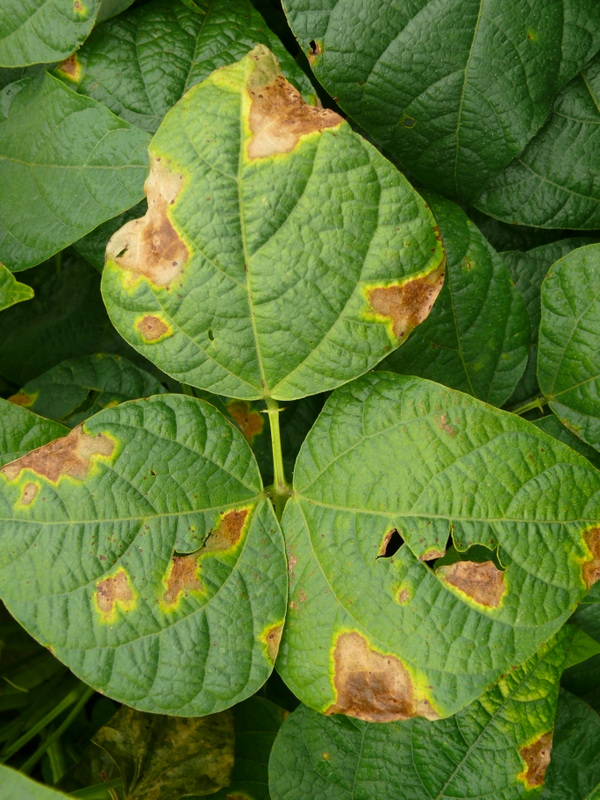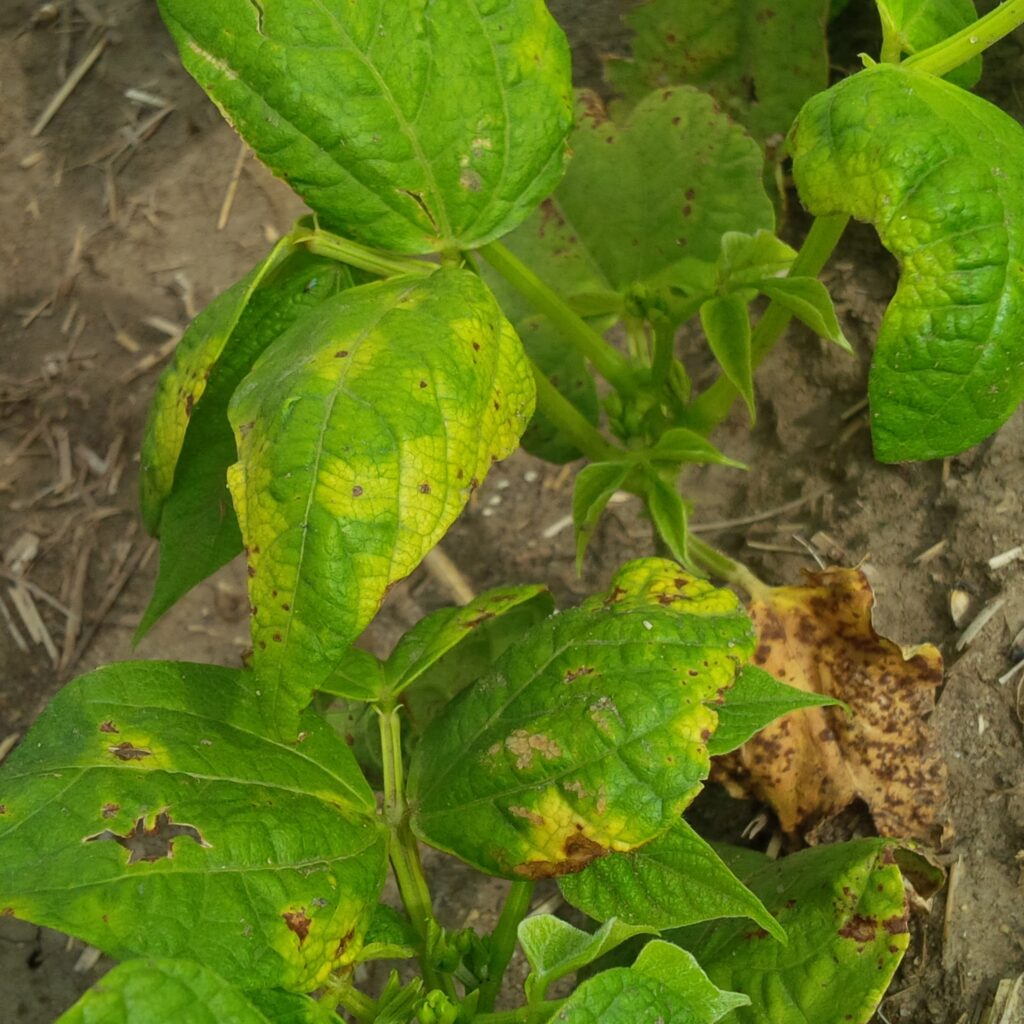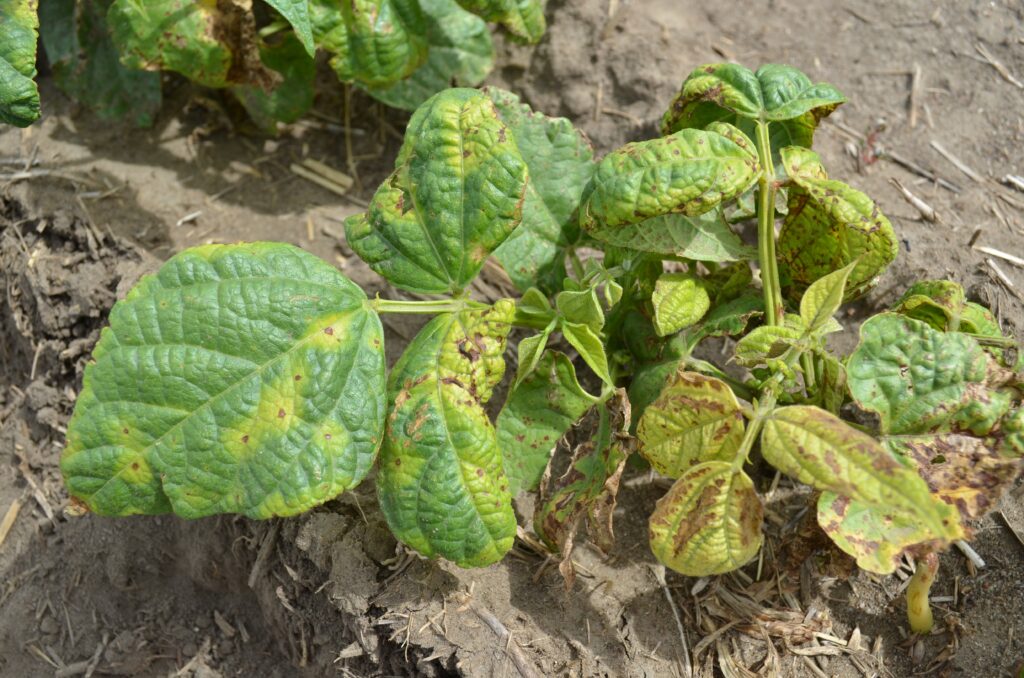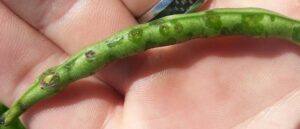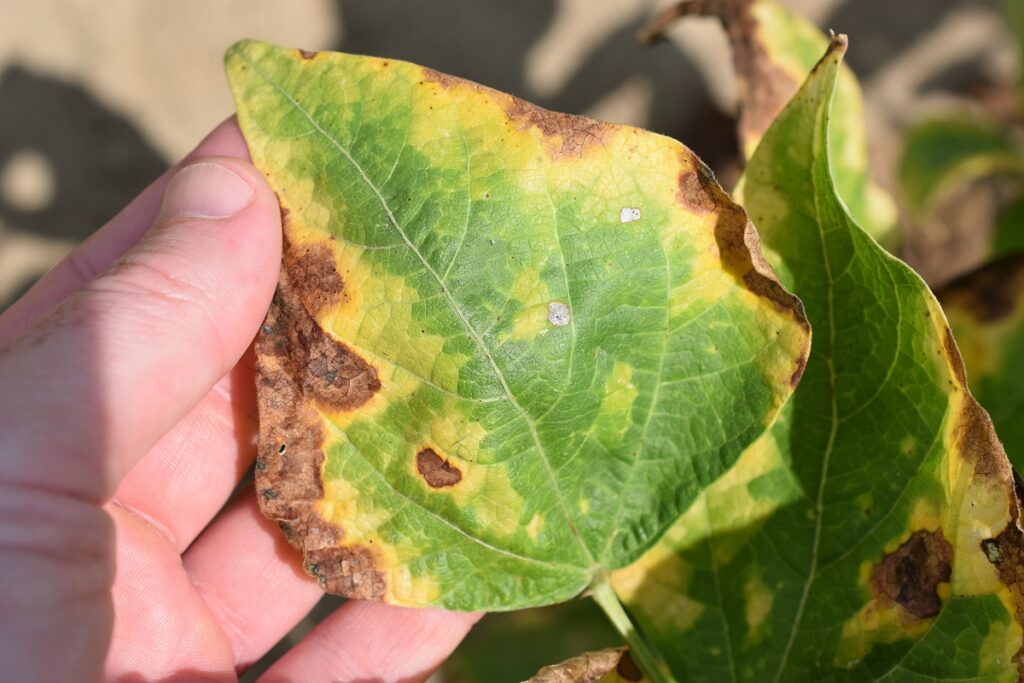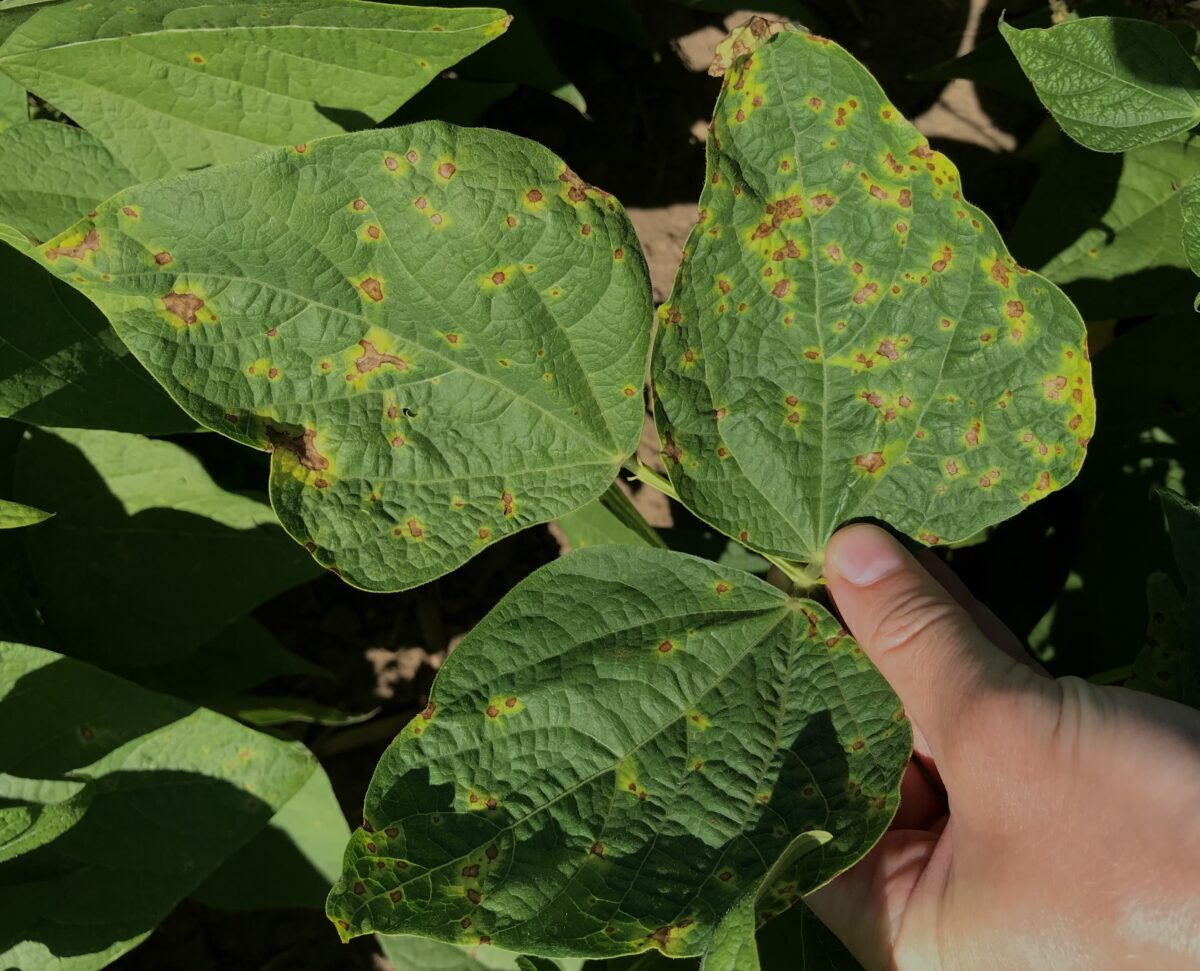Common bacterial blight (Xanthomonas campestris pv. phaseoli)
Halo blight (Pseudomonas syringae pv. phaseolicola)
Bacterial brown spot (Pseudomonas syringae pv. syringae)
Incidence
Several different bacteria cause significant damage in dry edible beans. In Ontario, common bacterial blight (CBB) and halo blight have been the primary bacterial diseases but surveys in 2018 – 2019 have shown that bacterial brown spot (BBS) is often being misdiagnosed as common blight. Most bean varieties are susceptible to CBB, but most are resistant to halo blight. BBS was first identified in adzuki beans in Ontario but has now been found on all market classes of dry beans.
Appearance
These diseases are difficult to tell apart. Both CBB and halo blight begin as small, water-soaked spots on the leaflets. In the case of CBB, these water-soaked lesions are dark and first appear on the underside of the leaflets. The spots enlarge and will join together to form large, brown, dry areas. Both of these diseases exhibit a thin, bright yellow border surrounding the infected areas, however, for halo blight, this border is broader and more noticeable. Under hot conditions, these borders may not form.
Leaf lesions of BBS first appear as small circular necrotic spots often surrounded by a yellow margin. Lesions coalesce to form brown streaks between leaf veins. Infection of leaf petioles results in wilting and necrosis of leaves.
As these blights develop, the infected leaves become brittle and will drop prematurely. Infected plants may lose their leaves a week or two earlier than healthy plants. In severe cases, the small veins and midrib will turn a reddish colour. Leaves infected with halo blight will curl and the younger leaves become yellow, having no noticeable halos or dead spots. Dry beans can tolerate up to 25 or 30% defoliation during flowering and pod fill stages.
Symptoms on the pods also begin as round, water-soaked lesions, or streaks along pod sutures with a yellow or cream-coloured mass of bacteria in the centre of these spots which gives them a greasy appearance. Over time, these pod lesions become sunken and dry with a reddish-brown border surrounding the yellow centre. The earlier the infection occurs on the pods, the greater the impact on seed quality. Seed is often shrivelled and, in the case of CBB, develops yellow-brown markings. Planting infected seed produces plants that have stem girdling or joint rot above the cotyledonary node. The plant is weakened and may fall over.
Disease Cycle
The primary mode of infection is from infected seed. These bacteria have low survivability through an Ontario winter in most cases. However, there are multiple host plants for BBS including corn, wheat, barley, alfalfa, clover, ash, poplar, apple, pear, lilac and more, which may increase its ability to survive locally or increase sources of inoculum.
Once the plants are infected, the disease may be spread from infected to healthy plants by storms, people and equipment moving across a field or between fields when the plants are wet. Rain and hail can also spread the bacteria through the field. Damage to plants from hail, wind, severe storms and mechanical injury that causes wounds provide conditions that favour infection. All three bacterial diseases are favoured by high humidity conditions. Temperatures favouring each bacterial disease differ; CBB, greater than 27°C; halo blight, less than 27°C; and bacterial brown spot, less than 30°C.
Management Strategies
Plant certified, disease free seed and consider selecting white bean cultivars with CBB resistance where possible. Seed grown in Idaho is likely to be free from bacterial diseases. Locally grown seed may carry bacterial disease.
Copper-based bactericides have activity against bacterial blight but application needs to occur early, prior to widespread infection. Bactericides provide short-term protection and repeated applications are often required if conditions continue to favour infection. Repeated applications may not provide adequate protection and may not be cost effective. Foliar or seed treatment fungicides will not provide control or protection.
Bacterial blights spread easily when plants are wet from rain or dew. Keep equipment and workers out of wet fields. Clean equipment when moving from field to field.
The bacterial diseases have low survivability through an Ontario winter, but infected fields should be rotated to non-host crops for at least 1 year before planting to dry beans again. Do not plant seed that has been harvested from infected fields. As well, do not plant a current crop next to a field that had significant blight in the previous year. Incorporate infected bean debris into the soil after harvest.

